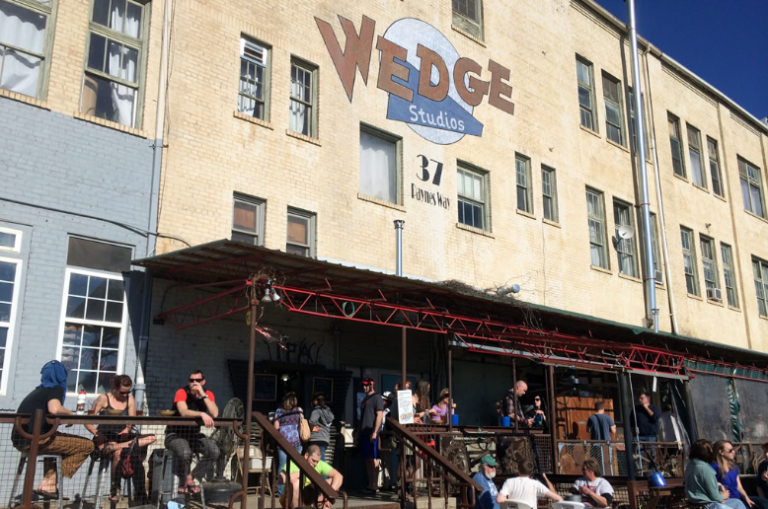Asheville’s Innovation Districts are emerging platforms where public-private partnerships intersect with City infrastructure, designed to promote hubs where jobs and sense of place connect with community.
The Innovation Districts were the topic of a Leadership Asheville Buzz breakfast panel discussion Aug. 18, moderated by Steph Monson Dahl, the City’s Riverfront Redevelopment Office Director. Asheville Mayor Esther Manheimer served as a panelist, flanked by New Belgium Brewing’s Asheville General Manager Jay Richardson, Patrick O’Cain, chef/owner of Gan Shan Station, and Chris White, founder, president & CEO of White Labs Inc.
Richardson said one way to understand what an Innovation District means is to equate it with an “investment district.” And the districts are not just about public money but private investment as well. “The return is connectedness,” he said. The innovation zone in the River Arts District, for example, forms a connection between West Asheville and downtown, along with a connection to greenways, Richardson said.
For the Mayor, the Innovation Districts provide a toolbox for solutions to Asheville’s growth and future.
“They help create an environment where developers can easily be connected to what Asheville is, its sense of place,” Manheimer said. “They guide us in making an intentional well-matched investment in Asheville’s future.”
Four innovative areas
In 2014, City Council approved the designation of three new Municipal Service areas in order to strengthen the City’s ability to finance projects in Innovation Districts. This brings the number of designated districts to four, including the Central Business District which was adopted in 2012. Significant planning, engineering and design work has already been done for projects in the River Arts District (RAD) and a team has being organized to guide progress on work in this Innovation District.
The City expects to work with the community on the preliminary design of projects for the South Slope Extension Innovation District next. The area is already experiencing significant growth, with the number of private and nonprofit sector investments and the potential for collaborations growing.
Innovation Districts create an environment for clusters of interrelated interconnected businesses to develop. “We all know proximity can help create creativity,” Mayor Manheimer said in the panel discussion.
A creative and collaborative craft brewing community is part of what drew White Labs to Asheville, said Chris White, its founder, president & CEO. “We also decided to come to Asheville because the city was innovative.”
San Diego-based White Labs, which makes yeast that’s supplied largely to the craft brewing industry, is slated to bring 65 jobs to a Charlotte Street site in spring 2016.
Growth along the Charlotte Street corridor is good for the City but also comes with new challenges. O’Cain, of Gan Shan Station, said one fallout has been an impact to the walkability of the neighborhood.
Mayor Manheimer pointed out that municipal service bonds and special obligation bonds can provide ways of borrowing money to maximize the City’s investment in these growth areas that are becoming job hubs.
At the end of the day, Asheville’s Innovation Districts are about opportunity and finding ways to make it easier for employers to come in and build in a place that is designed to maximize a high quality of life for all of Asheville’s citizens.
It’s not a destination, it’s a process, one City staff is working to engage the community with to form the best vision possible for productive Asheville growth.
Photo above:
Wedge Brewing serves as a hot spot or gathering hub in Asheville’s River Arts District, one of the City’s Innovation Districts.
